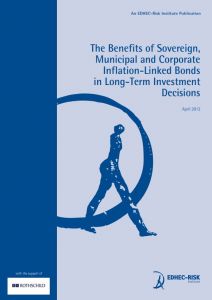

The Benefits of Sovereign, Municipal and Corporate Inflation-Linked Bonds in Long-Term Investment Decisions
This paper proposes an empirical analysis of the opportunity gains involved in investing in inflation-linked bonds for long-term investors facing inflation-linked liabilities. Using formal intertemporal spanning tests, it finds that substantial welfare gains are obtained, especially over long-horizons. Introducing inflation-linked bonds allows investors to improve investor welfare because of their hedging and performance benefits; hence investors may attain the same welfare (risk-return trade-off) with a lower initial investment when inflation-linked bonds are available compared to investing in stocks and nominal bonds only. Even more substantial utility gains are obtained in situations where the regulatory value for investors’ liabilities contains a credit risk adjustment.
Author(s):
Summary:
This paper proposes an empirical analysis of the opportunity gains involved in investing in inflation-linked bonds for long-term investors facing inflation-linked liabilities. Using formal intertemporal spanning tests, it finds that substantial welfare gains are obtained, especially over long-horizons. Introducing inflation-linked bonds allows investors to improve investor welfare because of their hedging and performance benefits; hence investors may attain the same welfare (risk-return trade-off) with a lower initial investment when inflation-linked bonds are available compared to investing in stocks and nominal bonds only. Even more substantial utility gains are obtained in situations where the regulatory value for investors’ liabilities contains a credit risk adjustment.
Register to download PDF
Register/Log in| Type : | EDHEC Publication |
|---|---|
| Date : | 23/04/2013 |
| Keywords : |
ALM and Asset Management |

